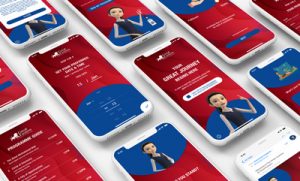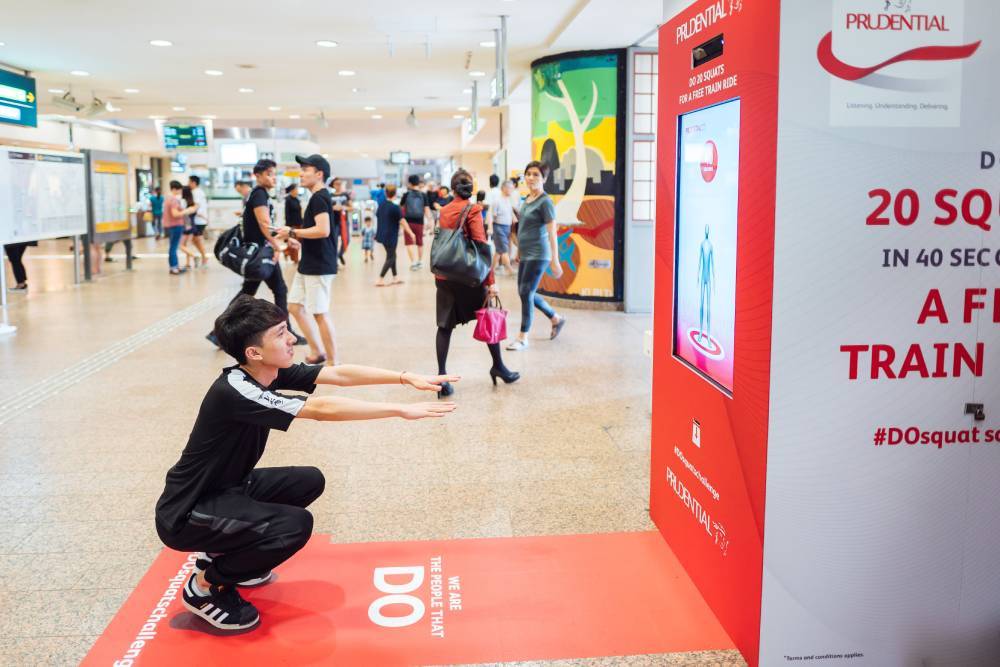Intimidated by the complexity of “gamification”?
First things first, we can achieve better understanding on what gamification is by recognising that it comes from the word “game”. Candy Crush, Angry Birds and Pokémon Go are all famous examples of interactive gamification that have achieved widespread popularity among people of all ages. This is due to the fact that, fundamentally, they are addictive and fun.
The Gaming industry has been booming for years now. From a psychological standpoint, it’s easy to see why. Games appeal to our core desires to progress through something we started, feel capable in a specific aspect of our lives and participate competitively among each other. To demonstrate the previous sentence, Pokémon Go is a game where players catch stronger Pokémon to progress, feel themselves becoming more capable by catching more powerful Pokémon and compete with others by battling each other’s Pokémon.
Consequently, interactive gamification is the concept of incorporating primary techniques that make traditional games fun and exciting, into a company’s commercial activities. An action where you shake your phone to earn vouchers for online retailers or enter a lucky draw is gamification at its foundation. Along the way, we will get into examples of how companies have made use of interactive marketing games. Some of them might sound more familiar than we think.
Gamification and its Purpose in a Business
Through importing mechanics regularly seen in games into common business practices, like community engagement programmes and marketing endeavours, we can inject a sense of participation into the audience. This participation often translates to satisfaction and delight due to game mechanics naturally allowing the user to be immersed in the experience.
Companies can blend their own agendas with interactive marketing campaigns to create an effective method of disseminating information to the public. If a brand wishes to advertise their new line of clothing, they could employ gamification principles by creating a social media campaign to allow followers to guess the colours of the clothes to be unveiled, for example.
According to experts, organisations who embrace interactive gamification have had 4 to 5 times the amount of growth in their annual revenue and surges in their customer profit margins.
Gamification has the potential to change a person’s actions, habits and behaviour. It can lead consumers to buy products from a certain brand or incentivise them to sign up for a membership programme. It possesses the ability to sway the consumer towards a company’s objective.
In reality, gamification is everywhere. We are just unaware of it because the act of gamify is so universal and naturally assimilated into our daily environment that it is treated as an everyday, ordinary, occurrence.
Interactive Marketing Campaigns Through Games
The global gamification market is expected to grow to an enormous US$11.94 billion by 2021, a US$7.03 billion increase from 2016.
Through gamifying an organisation’s touchpoints, consumer engagement and brand awareness can be amplified. According to a Gigya study of multinational conglomerates that started gamification, brands like Nike and Pepsi have seen a 22% growth in social media sharing to sites like Facebook and Twitter, a 13% growth in user commenting and a significant 68% increase in content discovery.
There will be an influx of potential customers when a touchpoint is gamified. To further enhance the customer’s experience, rewards like vouchers and free gifts can be attached to the touchpoint which will entice consumers, even those who have never interacted with the company, to start their very first contact with them. It also provides a form of instant gratification and keeps existing customers loyal to the brand.
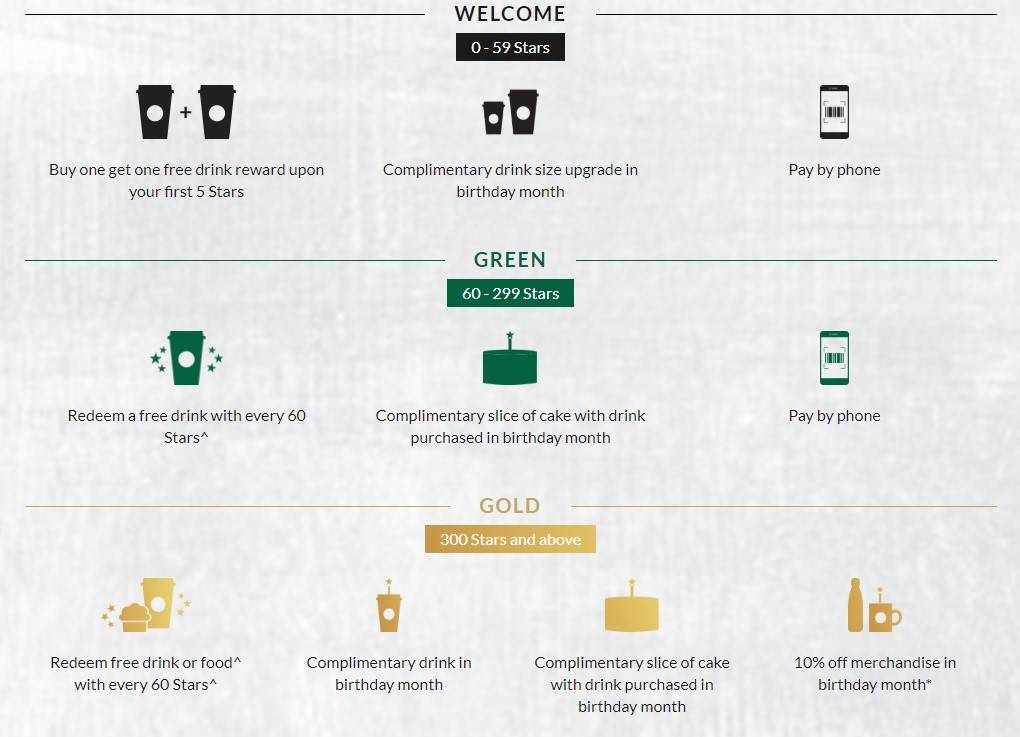
(Starbucks’s incentives for their loyalty programme, source: starbucks.com.sg)
Starbucks provides a gamified loyalty programme, Starbucks Rewards, that presents their patrons with rewards such as a free drink during their birthday month, a complimentary slice of cake, etc. This programme not only improves brand loyalty, but also gives Starbucks an avenue to collect data on their customers and adjust their marketing direction accordingly.

(Trinax’s Reunion Dinner Challenge at The Clementi Mall)
Trinax, a gamified marketing agency in Singapore, developed a game for The Clementi Mall about selecting cooking ingredients used in iconic Chinese New Year (CNY) dishes for reunion dinners in Singapore. It is a gamified experience where patrons could test their cooking knowledge and win prizes.
Data can be retrieved to gauge if the public is well-informed of what goes into the food they eat during CNY and subsequent events could be planned according to the results of the challenge. Possibly, the year after could be a gamified programme that educates the public on ingredients used in popular CNY dishes instead.
After attracting a fresh cluster of consumers, the data captured on consumer behaviour can help a company measure interest in certain products and improve their approach in future events. These insights into consumer behaviour are vital in improving the user experience (UX) and gamification helps to bring out useful information that the consumer might not normally divulge; by reason of the immersive experience a person has when engaging with a gamified touchpoint.
With the captured data, a business can customise brand messages that cater to their target market. It also helps with market segmentation by looking at demographics that are the most interested in a company throughout multiple touchpoints. This enables businesses to optimise their budget and improve marketing efficiency.
Providing Enhanced Healthcare Through Gamification
The healthcare gamification market is predicted to exceed US$40 billion by 2024. A bulk of these gamification efforts are related to fitness tracking where companies reward users after meeting a certain goal, like calories burnt or exercise duration. Fitness applications and step trackers are predominantly what organisations use to facilitate these projects, with brands like Fitbit and Garmin leading the charge in popularity. With smartphones being almost a necessity in Singapore society, the propagation of fitness apps is effortless and able to reach a vast majority of people.

(NikeFuel in testing, source: nike.com)
Nike kickstarted a fitness tracking programme, NikeFuel, that records a user’s exercise activities and gamifies the experience by giving out rewards when a particular goal is met. In addition to improving customer satisfaction using NikeFuel, Nike also collects data on its users to adapt their future products according to the data extracted.
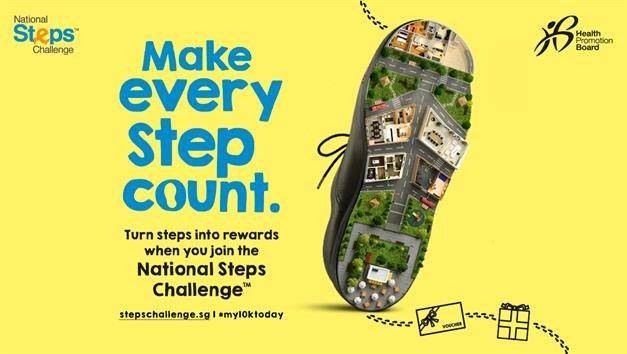
(National Steps Challenge, source: justrunlah.com)
Locally, the Health Promotion Board is on its 4th year of the National Steps Challenge. A free-to-participate event where Singaporeans can earn rewards by collecting points when a certain step count is met. These points can be exchanged for digital vouchers that can be used on retailers such as FairPrice and Lazada. The objective of this yearly challenge is to get Singaporeans moving. Among the countries in the association of Southeast Asian Nations (ASEAN), Singapore has the second highest percentage of overweight citizens at 32.8% and is estimated to have a million people with diabetes by 2050. The National Steps Challenge is a gamified event to encourage Singaporeans to exercise, even on weekdays when many spend most of their day at work.
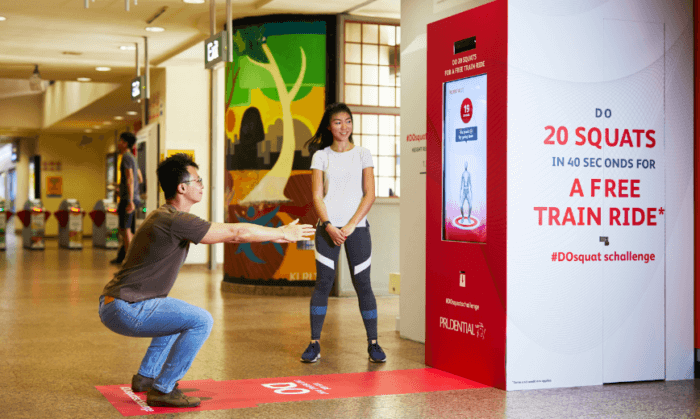
(Prudential DO Squat Challenge in action, source: facebook.com)
Trinax collaborated with Prudential to create a kiosk that facilitates their DO Squats Challenge, an interactive marketing campaign that went viral and was covered by many news sources. Situated in MRT stations, commuters were tasked to do a set of 20 squats in 40 seconds which could be detected using AR technology. This event garnered over 10,000 shares on social media platforms and was a massive hit among residents.
Here in Singapore, our health is an increasingly important issue nowadays. Due to our busy work schedules and scarce free time, it can be hard to find the drive and energy to get out of the house and partake in rigorous physical activity. Gamified healthcare campaigns, like the Prudential DO Squats Challenge and National Steps Challenge, are highly relevant in modern times to encourage the general public to commit to a daily exercise routine. The objectives of gamified health programmes is to encourage users to keep their bodies healthy and stave off illnesses that could severely affect our livelihood.
Personal health is something which should not be taken for granted. Unlike personal possessions, such as our clothes and smartphones, our health is something that cannot be replaced.
Facilitate Education by Gamifying
B2BMarketing, a website created for information on Business to Business marketing, talks about how interactive gamification can be used as an educational tool. Learning about a company’s core values or trying to memorise safety instructions can often be laborious to employees. Students experience a similar feeling when they are exposed to the same, monotonous, academic material for years in a row.
In these situations, interactive gamification can play a big role in helping learners relate with the material being taught by making learning fun and enticing. By introducing game mechanics like a story-driven learning experience or digital achievements like badges and account levels, we can meld mundane educational material with compelling game mechanics to provide an engaging learning experience.
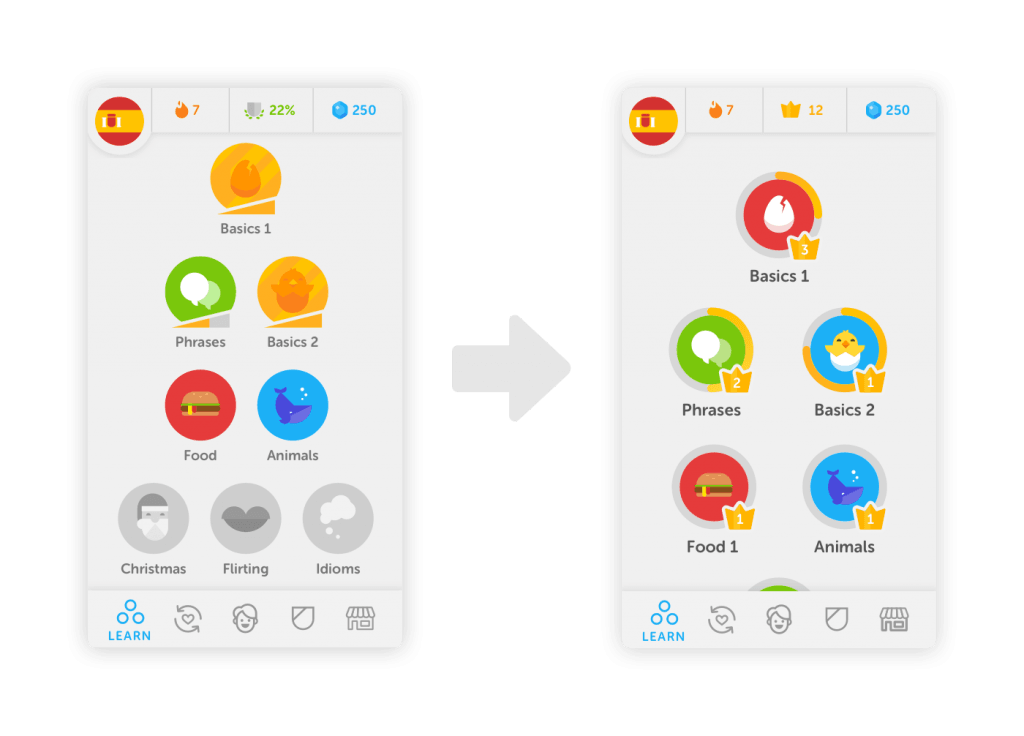
(Duolingo’s improvement on its app, source: making.duolingo.com)
Duolingo incorporates a levelling system where users could increase their level on a variety of topics pertaining to a language – food, idioms, phrases, etc. This encourages users to continue learning about the different topics to level up and will likely motivate them to attain a more proficient level in a shorter amount of time. Real-time feedback on progress through the course is an example of a gamified concept that can be utilised to make learning an engaging and fun experience for the user.

(CPF Savings Carnival Screenshots)
In partnership with Central Provident Fund (CPF), Trinax produced a game to teach students on the importance of accumulating savings early on in life. We developed an interactive marketing game where students could play as a juice bottle, collect juice through hand motions and fill up empty cups through body movements. This is another example of educational gamification that serves the purpose of educating people on a particular topic through interactive games that hold the user’s attention and instil informative messages into the users.
Whether it be trying to educate construction workers on safety hazards or kindergarten children on how to properly behave, gamification works wonders for disseminating information by soliciting attention through appealing visuals and hands-on experiences.
Our Experience with Interactive Gamification:
It is said that 80% of gamification projects fail. Factors like not having a clear goal for the game, too much educational material but not enough gamified elements and having no consequences for half-hearted gameplay could be detrimental to the overall experience. To avoid this failure, we need to ensure that a purpose is driving the entire project. An aimless project breeds zero progression.
With over 100 successful game deployments yearly, Trinax is well-equipped in handling the creation of interactive marketing campaigns and design of games and services to ensure that your collaboration with us will be customised according to the objective of your brand and project. How we approach gamification is with a heap of prior knowledge and precepts that involve being cautious to avoid mistakes that lead a gamification project to failure.
Trinax expertise in interactive marketing solutions includes an array of games and services in-house which guarantees a level of quality that meets our stringent standards. Developing in-house also facilitates any change in scalability or content required by our clients as it allows us to make necessary changes with ease.
The Appealing Nature of Interactive Gamification
Ultimately, gamification appeals to the intrinsic need for our minds to attain some form of entertainment amidst the mundane lifestyle most of us are going through. It is an umbrella term that comprises the concepts that make a typical game fun, extracting those concepts at a fundamental level and using those concepts to make an ordinary campaign or event captivating and lively to the average consumer. It makes the journey of learning something new interactive and allows the participant to internalise the information that is given.
Companies should make use of every opportunity they have to engage with consumers, both online and offline, to make a good impression and encourage recurring interactions. In that regard, gamification can contribute tremendously in an assortment of ways.

